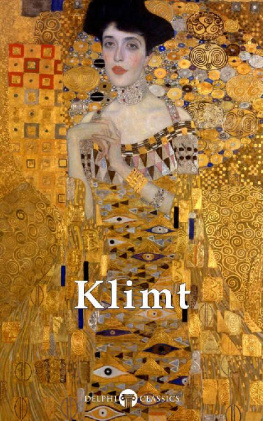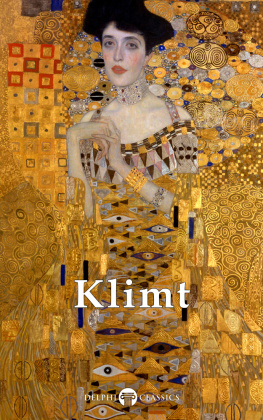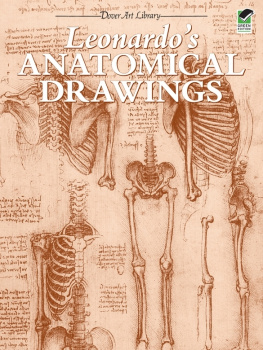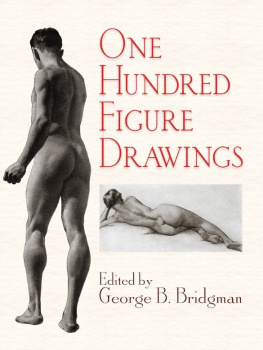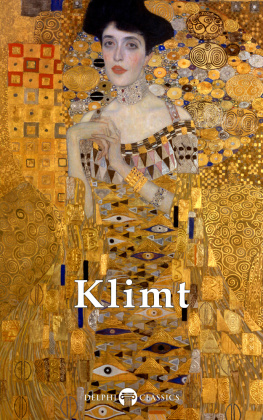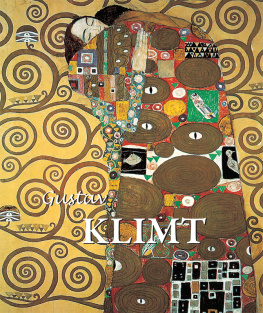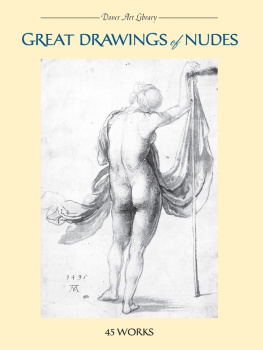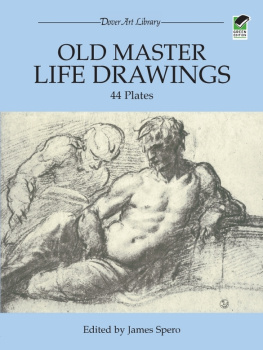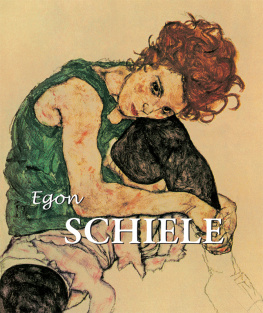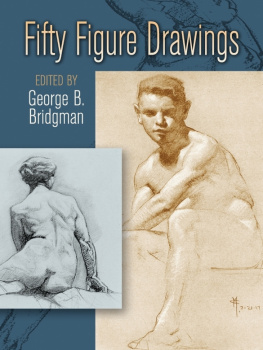Gustav Klimt - 100 Drawings
Here you can read online Gustav Klimt - 100 Drawings full text of the book (entire story) in english for free. Download pdf and epub, get meaning, cover and reviews about this ebook. year: 2013, publisher: Dover Publications, genre: Detective and thriller. Description of the work, (preface) as well as reviews are available. Best literature library LitArk.com created for fans of good reading and offers a wide selection of genres:
Romance novel
Science fiction
Adventure
Detective
Science
History
Home and family
Prose
Art
Politics
Computer
Non-fiction
Religion
Business
Children
Humor
Choose a favorite category and find really read worthwhile books. Enjoy immersion in the world of imagination, feel the emotions of the characters or learn something new for yourself, make an fascinating discovery.
- Book:100 Drawings
- Author:
- Publisher:Dover Publications
- Genre:
- Year:2013
- Rating:5 / 5
- Favourites:Add to favourites
- Your mark:
- 100
- 1
- 2
- 3
- 4
- 5
100 Drawings: summary, description and annotation
We offer to read an annotation, description, summary or preface (depends on what the author of the book "100 Drawings" wrote himself). If you haven't found the necessary information about the book — write in the comments, we will try to find it.
The finest drawings of the celebrated Austrian artist mostly nudes and seminudes taken in part from rare portfolios of 1919 and 1964 reveal the dynamics of the line in representing the human figure spontaneously and freely. Introduction.
100 Drawings — read online for free the complete book (whole text) full work
Below is the text of the book, divided by pages. System saving the place of the last page read, allows you to conveniently read the book "100 Drawings" online for free, without having to search again every time where you left off. Put a bookmark, and you can go to the page where you finished reading at any time.
Font size:
Interval:
Bookmark:
GUSTAV
KLIMT one hundred drawings

Portrait sketch of a lady in a large hat; reclining woman; 1905/12.
GUSTAV
KLIMT one hundred drawings
With an introduction by Alfred Werner
DOVER PUBLICATIONS, INC., NEW YORK
Copyright 1972 by Dover Publications, Inc. All rights reserved.
Gustav Klimt: 100 Drawings is a new work, first published by Dover Publications, Inc., in 1972. The publisher is grateful to Mr. Serge Sabarsky, who loaned 53 original drawings for reproduction and furnished much documentation. The other 47 drawings in this volume are reproduced from two portfolios of facsimiles: (1) Gustav Klimt: fnfundzwanzig Handzeichnungen, published by Gilhofer & Ranschburg, Vienna, 1919; and (2) Gustav Klimt: 2S Zeichnungen ausgewhlt und bearbeitet von Alice Strobl , published by the Akademische Druck- und Verlagsanstalt, Graz (Austria), 1964 (used by special arrangement with the original publisher).
Library of Congress Catalog Card Number: 78-157434
International Standard Book Number
ISBN-13: 978-0-486-22446-6
ISBN-10: 0-486-22446-5
Manufactured in the United States by Courier Corporation
22446523
www.doverpublications.com
Introduction
Truth is a fire, and to speak truth means to shine and to burn
K LIMT, ON A SKETCH FOR THE PAINTING N UDA V ERITAS
There was a time when Klimts name was a battle-cry for those progressive Austrian artists who were fed up with the pseudo- classical, pseudo-Baroque spirit that continued to dominate Vienna. In 1897 led an exodus of the young from the arch-conservative Knstlerhaus, whose middle-aged members were still painting historical anecdotes and mythological themes in an antiquated manner. These seventeen rebels formed a new association, with an exhibition hall of their own and a large, superbly illustrated magazine, Ver Sacrum. This group was later known as Secession , and the manner in which its members expressed themselves, as Secessionsstil. Its foremost representative, Gustav Klimt (1862-1918), became famous, or rather notorious, in his native city largely on account of a scandal revolving around three large oils he painted for the entrance hall (Aula) of Viennas University: they were rejected as immoral and even pathological. By and large, however, he received more attention abroad than in Austria. He was the only Austrian to be made an honorary member of the International Society of Artists, presided over by Whistler, with headquarters in London. Paris awarded him a Grand Prix, Rome a Medaglia dOro. It was only in 1917 that honorary membership in the Vienna Academy of Fine Arts was bestowed upon him. A few months later, on February 6, 1918, he died of a cerebral hemorrhage.
There was an eclipse of several decades. He was never forgotten in Central Europe, but outside he was insufficiently known and appreciated until the 1960s, when comprehensive shows in Italy, France, England and the United States belatedly called attention to this sensitive and subtle fin-de-sicle decorator. His current vogue may, in part, be traced to the revived interest in Art Nouveau, whose Austrian manifestation, Secessionsstil , he so well exemplified. It may also be due to the more recent fascination with what has been dubbed Erotic Art. Klimt, after all, was preoccupied with one theme: the female, mysterious and even frightening, yet a perpetual source of exquisite delight.
While handbooks on art no longer omit his name, not enough is said about his superb draughtsmanship. Indeed, some might prefer his drawings, with their direct and immediate appeal, to his elaborate and complex compositions in oil that appear encumbered by too much symbolism. Nevertheless, Klimts paintings illustrate remarkably well Austrias belle poque , the closing decades of the Hapsburg Empire, when the glittering faade barely concealed the rot at the very foundations of society. His portraits of Austrian bankers wives make these pampered darlings look like exotic birds, bedazzled by their own plumage; all the gold and silver sequins and precious, enamel-like pigments cannot hide the sitters uselessness, nor the underlying gentle melancholia. In Klimts quasi-pointillist renderings of gardens, parks, orchards and towns along lakes, there is no air that we can breathe; the greens and blues are not to be found in nature. Significantly, the human figure is absent from these sad landscapes that are spread out like ornamental rugs.
In these pictures, and in those that deal melodramatically with more philosophical themes, Klimts mannerism, with mosaic-like patterns and hieratic poses, sets him apart from the conservative establishment of his time. But it also indicates the gap that was to separate him from a younger group of rebels, among them his own disciple, Egon Schiele, and Oskar Kokoschka, foremost representatives of what became known as Viennese Expressionism.
In his drawings, however, Klimt created a bridge between the classical style of the last century and the prophetic explosiveness that welled up just prior to World War I. He emerges at his best as a draughtsman, Gustav Glck, for many years director of Viennas Kunsthistorisches Museum, wrote as early as 1922; Glck considered the drawings perhaps the ultimate of Klimts artistic achievement. More recently, Fritz Novotny, long a director of the sterreichische Galerie, which owns some of the most important oils of Klimt, hailed him as one of the great draughtsmen of the period, and pointed to the spiritualization achieved by the masters graphic manner. His drawings, indeed, do not reflect the severe Art Nouveau stylization of his canvases. Ranging from the somewhat pedantic, uncertain exercises of the young student to works completed just before he died, they reveal a progress, an advance to greater and ever greater freedom, lightness, spontaneity.
His paintings, upon which he worked very slowly and fastidiously, do not number much above two hundred; his drawings have been estimated in the thousands. Friends recall having seen his atelier virtually littered with them. A good many, while unmistakably revealing the masters hand, are ephemeral, but quite a few are full-fledged and fully realized. To him, his drawings were more than preparatory sketches, although he signed his name only to the few that he dedicated to friends or sold, and rarely dated the drawings he produced in his years of maturity. (He signed his drawings in block letters, his first name above his surname; the unsigned drawings carry the stamp of the estate, Gustav Klimt Nachlass, or a note in the hand of the artists sister, Hermine; some, from the collection of Klimts sister Johanna Zimpel and her son Rudolf, bear on the reverse the stamp Johanna Zimpel or Nachlass Gustav Klimt Sammlung R. Zimpel.) Unlike Gauguin, who refused to show his drawings (They are my private letters, my secrets), Klimt readily included his in his one-man exhibitions. Several were reproduced in Ver Sacrum . One number of that magazine was even confiscated by the Austrian authorities on account of the obscene drawings related to Medicine , one of the above-mentioned rejected pictures, originally destined to adorn the University. But this was in the Vienna of 1900, whose populace was outraged by girls riding bicycles, and ballerinas dancing without stockings! It was the hypocritical city where even in art the open display of the body was frowned upon unless demanded by allegorical themes. Stefan Zweig later described the sticky, sultry, unhealthy atmosphere that prevailed in Imperial Vienna, with its dishonest and unpsychological morality of secrecy and hiding. Klimt wounded public sentiment by not considering any part of the human anatomy ugly, shameful or ignoble, and was made to suffer repeatedly for not playing the national game of falsehood.
Next pageFont size:
Interval:
Bookmark:
Similar books «100 Drawings»
Look at similar books to 100 Drawings. We have selected literature similar in name and meaning in the hope of providing readers with more options to find new, interesting, not yet read works.
Discussion, reviews of the book 100 Drawings and just readers' own opinions. Leave your comments, write what you think about the work, its meaning or the main characters. Specify what exactly you liked and what you didn't like, and why you think so.


